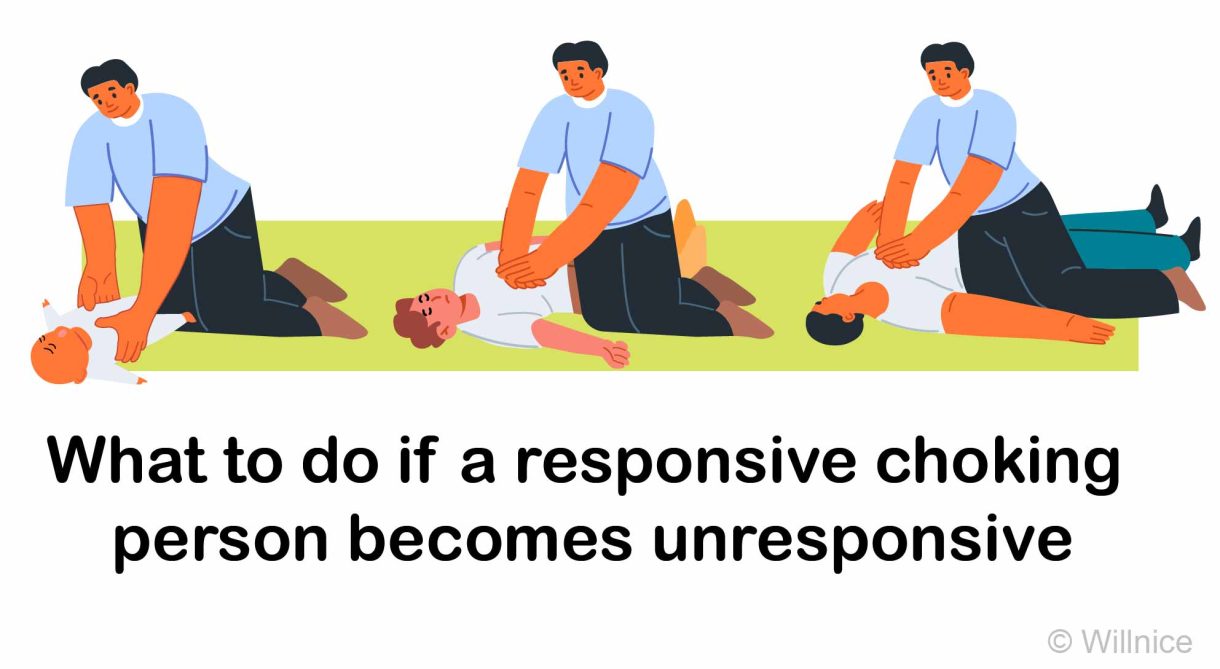
Q: If a responsive choking person becomes unresponsive, what care should you give?
A: If a choking person becomes unresponsive and is not breathing or only gasping (cardiac arrest), you should begin CPR immediately.
Preface:
You may feel quite panicked if a responsive choking person becomes unresponsive while you are providing first aid. Don't worry—we've got you covered.
This ultimate guide details how to perform CPR step-by-step if the choking person becomes unresponsive, with specific instructions tailored for infants, children, and adults. Continue reading to learn CPR skills that can save lives in choking emergencies.
What is CPR?
CPR, or Cardiopulmonary Resuscitation, is a life-saving technique used in emergencies where someone's heartbeat or breathing has stopped. It combines chest compressions with rescue breathing to help deliver oxygen to the brain and maintain blood flow, which is crucial for preventing brain damage and death.
CPR Ratio: 30:2 - This refers to giving 30 chest compressions followed by 2 rescue breaths.
- Chest Compressions: These are rapid, deep presses on the chest, meant to mimic the heart pumping and help circulate blood to vital organs, including the brain and heart.
- Rescue Breathing: This involves giving breaths to the victim to provide oxygen to their lungs, which is essential for blood oxygenation when they cannot breathe on their own.
Situations Where CPR May Be Required
- Cardiac Arrest: When the heart unexpectedly stops beating.
- Drowning: Where breathing stops due to inhaling water.
- Choking: When the airway is blocked, preventing breathing and oxygen circulation.
- Electrical Shock: Which can interrupt cardiac function.
- Severe Allergic Reactions: These can cause swelling that blocks air passages or shock that stops the heart.
This article focuses on choking incidents and offers guidance on performing CPR if the choking person you are assisting becomes unresponsive.
How to Confirm If Someone Is Unresponsive
Before giving CPR, make sure the choking person is really unresponsive. Follow the shout-tap-shout method to check for responsiveness:
- Shout: Call their name if you know it.
- Tap: Gently tap the person’s shoulder if they are an adult or child, or the bottom of their foot if an infant.
- Shout Again: Shout again while quickly looking for any breathing or signs of severe airway obstruction.
Alert: Check for responsiveness for no more than 10 seconds. If there is no response from the choking person, begin CPR immediately.
Note: Willnice’s guidelines adhere to the current CPR standards set by the American Heart Association. These steps are crucial to keep the choking person alive until Emergency Medical Services (911) arrive.
How to Perform CPR on an Unresponsive Choking Infant / Baby
These CPR techniques are specifically developed for infants aged 0 to 12 months who are unresponsive due to choking.
Step 1: Positioning
- Gently lay the baby on their back on a firm, flat surface like a table or the ground.
- Stand or kneel beside the baby, with your hips at a slight angle
Step 2: Shout for Help
- If others are nearby: Instruct someone to call 911 and get an AED. You start CPR immediately. Use the AED as soon as it arrives.
- If alone without a phone: First, perform 5 cycles of CPR (30 chest compressions followed by 2 breaths per cycle). Then, take the baby with you to call 911.
- If alone with a phone: Call 911 first and put the phone on speaker so the emergency operator can assist you. Then you start performing CPR right away.
Step 3: Begin with 30 Chest Compressions
- Position two fingers in the center of the infant's chest, just below the nipple line.
- Push down hard and fast without pausing, compressing the chest about 1.5 inches deep, at a rate of 100 to 120 compressions per minute.
- Count out loud as you compress: "1,2,3,4,5,6…28,29,30."
Note: Alternatively, you can use the "Both Thumbs Technique" to perform chest compressions on an unconscious choking infant.
Step 4: Check the Infant's Mouth for an Object
After 30 compressions, check the infant’s mouth to see if the choking object has come out.
- Use the head-tilt chin-lift technique: Place one hand on the infant's forehead and two fingers under the chin to gently tilt the head back and open the mouth to check.
- If you see an object, carefully remove it with a finger sweep using your pinky.
- If no object is visible, proceed to give 2 rescue breaths.
Alert: Never do a finger sweep in the baby's mouth unless you can see the object, as this could push it deeper into the airway.
Step 5: Give 2 Breaths
- Cover the baby's mouth and nose with your mouth.
- Give 2 quick breaths into their mouth, each about 1 second long.
- Watch for the chest to rise: If the chest rises, this indicates that your breaths are entering their lungs. Then, continue with the normal CPR sequence of 30 chest compressions followed by 2 breaths.
Step 6: Repeat the CPR Cycle
If the chest does not rise, it indicates that the breaths are not entering the lungs, suggesting the airway may still be totally blocked.
Continue the cycle: perform 30 chest compressions, check the mouth, give 2 breaths, and repeat.
Keep repeating this cycle until:
- The object is expelled.
- The infant shows signs of life (wakes up, moves, cries, speaks, blinks, or reacts).
- Emergency personnel arrive and take over.
How to Perform CPR on an Unresponsive Choking Child
These CPR techniques are appropriate for an unresponsive choking child aged 1 year to puberty.
Step 1: Positioning
- Carefully lower the child on a firm surface, such as a table or the ground.
- Kneel beside the child with your knees spread about shoulder-width apart.
Step 2: Shout for Help
- If Others Are Nearby: Instruct someone to call 911 and get an AED. You begin CPR right away. Use the AED as soon as it arrives.
- If Alone Without a Phone: First perform 5 CPR cycles (30 chest compressions followed by 2 breaths). Then quickly find your phone to call 911.
- If Alone With a Phone: Call 911 first and put the phone on speaker mode so that emergency staff can help you. Then you start performing CPR.
Step 3: Begin with 30 Chest Compressions
For a larger child:
- Use both hands. Place the heel of one hand in the center of the chest. Cover it with the other hand and interlace your fingers.
- Push down firmly and quickly without pausing, compressing the chest about 2 inches deep, at a rate of 100 to 120 compressions per minute.
- Count out loud as you compress: "1,2,3,4,5,6…28,29,30."
For a smaller child:
- Use one hand. Place the heel of your hand in the center of the chest.
- Push down hard and fast without pausing. Compress the chest about 2 inches deep, at a rate of 100 to 120 compressions per minute.
- Count out loud as you compress: "1,2,3,4,5,6…28,29,30."
Step 4: Check the Child's Mouth for an Object
Use the head-tilt chin-lift technique to open the child’s mouth:
- Place one hand on the child's forehead and two fingers under the chin to tilt the head back.
Look inside the mouth to check for any visible objects.
- If you see an object, carefully remove it with a finger sweep using your pinky.
- If no object is visible, proceed to give 2 breaths.
Step 5: Give 2 Breaths
- If no object is seen, pinch the child's nose and cover their mouth with yours.
- Attempt to give 2 breaths, each lasting about 1 second, watching for the chest to rise.
- If air goes in and the chest rises, continue with the normal CPR sequence of 30 chest compressions followed by 2 breaths.
Step 6: Repeat the CPR Cycle
If air does not go in and the chest doesn’t rise, it indicates the airway is still completely blocked.
Continue the cycle: perform 30 chest compressions, check the mouth, and give 2 breaths.
Keep repeating this cycle until:
- The object is expelled.
- The child shows signs of life (wakes up, moves, cries, speaks, coughs, blinks, or reacts).
- Emergency personnel arrive to take over.
How to Perform CPR on an Unresponsive Choking Adult
Step 1 Positioning
- Gently lower the choking person to a firm, flat surface, such as the ground.
- Kneel beside them with your knees near the person's body, spread about shoulder-width apart for stability.
Step 2: Shout for Help
- If Others Are Nearby: Instruct someone nearby to call 911 immediately and get an AED. You start CPR right away. Use the AED as soon as it arrives.
- If Alone Without a Phone: First perform 5 CPR cycles (30 chest compressions followed by 2 breaths). Then quickly find your phone to call 911.
- If Alone With a Phone: Call 911 first, using speaker mode so the emergency dispatcher can assist you. Then you start CPR right away.
Step 3: Begin with 30 Chest Compressions
- Place the heel of one hand in the center of their chest and lay your other hand on top, interlacing your fingers.
- Push down hard and fast without pausing, compressing the chest about 2 inches deep, at a rate of 100 to 120 compressions per minute.
- Count out loud as you compress: "1,2,3,4,5,6…28,29,30."
- Allow the chest to return to its normal position after each compression.
Step 4: Check the Adult's Mouth for an Object
Before giving breaths, open the mouth first to look for any objects.
Use the head-tilt chin-lift technique to open the choking person’s mouth:
- Place one hand on the person’s forehead and two fingers on the chin.
- Tilt the head back past the neutral position to better view the inside of the mouth.
Look carefully for any visible objects:
- If you see an object, carefully remove it with a finger sweep using your pinky.
- If no object is visible, proceed to give 2 breaths.
Alert: Never do a finger sweep unless you can see the object, as this could push it further into the airway, worsening the blockage.
Step 5: Give 2 breaths
- Pinch the person's nose shut to prevent air escape.
- Take a normal breath, then create a complete seal over the person's mouth with your mouth.
- Blow into their mouth for about 1 second, ensuring that the chest begins to rise, indicating that the air is entering the lungs. Allow the chest to fall naturally, letting the air exit before delivering the second breath.
- Then give a second breath for about 1 second.
- If the chest rises, indicating effective breaths, continue the CPR cycle with 30 compressions followed by 2 breaths.
Alert:
- Avoid pushing the head down while giving breaths.
- Only give two breaths per CPR cycle. Do not exceed this number.
Step 6: Repeat the CPR cycle
If breaths do not enter the lungs and the chest does not rise, it indicates that the airway is completely blocked.
Continue the cycle: perform 30 chest compressions, check the mouth for the object, and give 2 breaths.
Keep repeating this CPR cycle until:
- The object is expelled.
- The choking person shows signs of life (wakes up, moves, cries, speaks, coughs, blinks, or reacts).
- Emergency personnel arrive to take over.


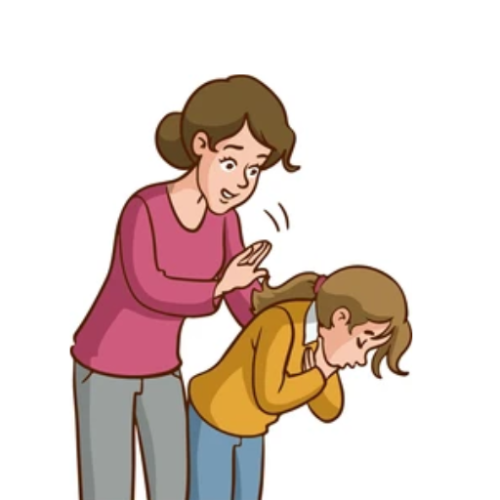
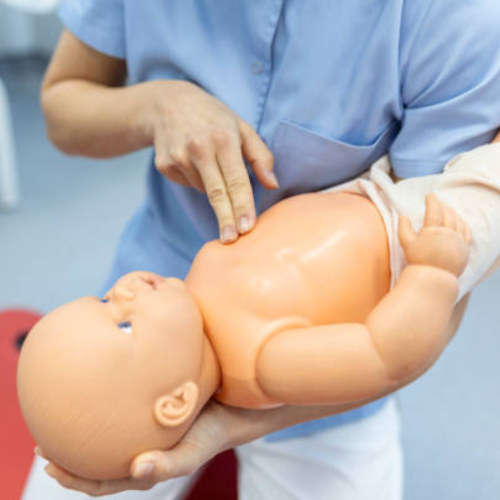

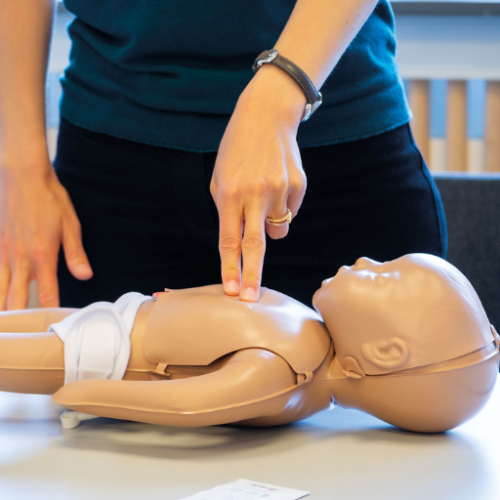

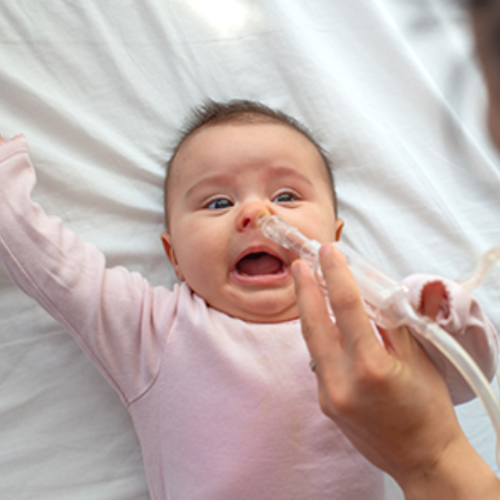
 Login with Google
Login with Google Login with Facebook
Login with Facebook